It is my civic duty as a blogger to inform the public about an unusual new malady that we recently discovered. Signs that you might be suffering from Beach Withdrawal Syndrome (BWS): You giggle with glee when you realize you have tracked sand all over the inside of the rig. You smile smugly when you look in the mirror and discover weirdly shaped swaths of sunburn that scream, “I am incompetent at sunscreen application.” When you get blisters from wearing Tevas for the first time in over a year, you bandage up your feet and happily strap those same Tevas back on. You are pleased with the humidity that ensures your kitchen towels never really dry after doing dishes. You are enthusiastic about looking for a car wash large enough to accommodate the rig in order to wash off the salt spray when you depart. If any of these of these symptoms last longer than four hours, call your doctor immediately. And if you laugh uproariously when attacked by a swarm of salt marsh mosquitoes, you should be consulting with a psychiatrist, not a random internet writer. But I digress.
It was obvious that we had been suffering from a severe case of BWS, and Padre Island was just what the doctor ordered. Neither of us had spent any time on the Texas Gulf Coast before, yet the familiarity of the place felt like, as John Denver would say, coming home to a place we’d never been before. Everything about Padre Island was so reminiscent of the coastal parts of Florida we enjoy: Pelicans lounging on every post and railing. Traveling across wide shallow lagoons on causeways that seem to skim just inches above the water. Homes and businesses painted in cheerful pastel colors. Working marinas full of small commercial fishing boats and weathered shacks selling bait and/or fresh seafood. Walking barefoot on a wide, sandy beach in the middle of December. Watching dolphins frolicking offshore and agile shorebirds scampering away from incoming waves. It was all incredibly comfortable and comforting, and our excellent camping location set the stage for our enjoyment of the whole area.
Padre Balli County Park
We firmly believe that when visiting a beach destination, it’s important to be as close to the beach as possible. There is nothing better than being able to hear the surf from our rig, and we’ve been lucky to experience several such spots in Florida and on the Pacific Coast. Our campsite at Padre Balli County Park has this audio amenity, and so much more. The park is situated at the southern end of the Padre Island community, with the national seashore starting just south of the county park, so we could walk right from our campsite onto miles of undeveloped beach. The fishing pier in the park provided lovely views of the Gulf, and even had a sports bar/restaurant located on the pier. The restaurant had a completely generic menu full of fried foods, adequate live music in the evenings, terrible service, and a decent selection of beer. But there was seating right along the edge of the pier with wide open views of the Gulf, so needless to say we loved it. The whole park was an outstanding atmosphere for kicking back and getting into beach mode.
The original campground in the park is just a paved lot with very closely adjacent parking spaces, and it is in pretty sorry shape with giant axle-busting potholes and decrepit shade shelters. But the county has invested in a new section of camping sites, and these brand new spots are luxurious full hookups in pristine condition. We selected one that backed up to open grasslands so we had nice views from our panoramic window. There is no foliage between sites to provide privacy, but visiting in the off season meant we never had more than 6 or 7 other campers in the 50+ sites in our section so we had plenty of personal space and no wait for the showers. We might be less thrilled to camp here during the busy summer season, but it was just about perfect in December.
Padre Island National Seashore
Padre Island National Seashore is very proud of its status as the longest undeveloped barrier island in the world, at 70 miles in length. This narrow strip of land has wide sand beaches, low dunes facing the Gulf, inland grass prairies, and tidal flats facing a hypersaline lagoon on the landward side. Texas is one of those wacky states that permits driving on the beach, even in the national seashore, but at Malaquite Beach the national park preserves a five mile stretch as a vehicle-free zone. This was our favorite spot to walk, even though it required driving down from our campsite to the national seashore visitor center. This beach in the national seashore was almost completely deserted; on a six-mile beach walk we saw fewer than a dozen other people, including NPS staff doing maintenance work.
The main way to explore the island south of Malaquite Beach is by driving down the beach itself, which is just wrong. So instead we checked out the grasslands full of bluestem on the Grasslands Nature Trail, and also the boat ramp and windsurfing area on the lagoon. Corpus Christi in general, and particularly the national seashore, is known as a premier birdwatching destination. We are mere dilettantes in the world of birding, but to us it seemed that the volume and variety of birds was just average for a normal barrier island. We saw most of our birds out along the shore — since that’s where we spent most of our time — and they were the usual suspects: pelicans, royal terns, herring gulls, plovers (semi-palmated, maybe?), sandpipers, whimbrels or curlews, great blue herons, and ospreys.
South Texas Botanical Gardens
Speaking of things familiar, the largest collections at the South Texas Botanical Gardens are orchids and bromeliads — AKA the things we had hanging in our trees at the last home we owned in Florida. Winters here in South Texas are apparently a little too harsh for these tropical plants, so at the botanical gardens they live inside conservatories. Maybe we are jaded about these plants that are so familiar, but we thought these collections were just OK, with very few unusual specimens.
We also didn’t particularly love the zoo-like aspects of this garden. The facility houses a reptile collection as well as a group of different parrots who live in small outdoor cages when not being used for programming for kids. The parrots are from a local rescue organization, but their cages were still depressingly small. And their extremely loud squawking didn’t promote the serenity we usually look for when visiting gardens.
What we did enjoy was the boardwalk that overlooked a natural wetland, a walk through a native forest of scrubby coastal trees, the small collection of cactus, yucca, and agave plants in the Arid Garden, and the very extensive and well-designed rose garden. Roses are notoriously hard to grow in hot, humid climates, and someone at this garden has a real gift for keeping the roses happy here.
Regular readers know that we are plant enthusiasts and visit botanical gardens whenever we get the chance. This garden in Corpus Christi wasn’t our favorite, but as usual we had free entry thanks to the reciprocal admissions program of the American Horticultural Society. Given that we invested nothing in an entry fee (other than maintaining our membership with our home garden) it was easy to take a quick tour of this garden and leave without any guilt over a wasted entry fee.
USS Lexington
Corpus Christi has long been a Navy town thanks to the Naval Air Station. Today this facility is a training location for shore-based pilots with the Navy, Coast Guard, and Marine Corps, but during World War II it was the main training facility for carrier-based Navy pilots and its thousands of trainees included luminaries like George H. W. Bush. In keeping with that history, one of the most popular attractions in Corpus Christi is the USS Lexington, a small aircraft carrier (how’s that for an oxymoron?) that launched in 1942. The ship was in service until 1991, and after being decommissioned it was turned into a giant floating museum located in the bay in front of downtown Corpus Christ.
The museum has created a bunch of routes through the innards of the ship that take visitors though different areas, each starting from and returning to the wide open hangar deck just below the flight deck. The prominent arrows and ropes across wrong turns are very necessary, because the ship is a complete maze. By following the various tour routes, we had the chance to see most areas that were significant to the operation of the ship, including the engine rooms, machine shop, aircraft launch and landing mechanisms (including steam-powered catapults for launch and huge hydraulic pistons attached to cables that caught landing planes), gun turrets, main bridge, navigation, and radar. We also checked out many areas that supported the daily lives of the people who served, including officer and crew quarters, the mess hall, the mini-hospital sick bay, the full service dental office, chapel, and barber’s shop. We were intrigued by the forethought and planning that went into the safety measures on the ship, including vigilant damage control teams, emergency bulkheads, easy-to-use power re-routing stations, firefighting equipment, and lifeboat mechanisms and contents. Every single one of these areas was absolutely packed with explanatory signs as well as displays of artifacts like uniforms of people who served aboard the ship, souvenirs from Japan, and letters sent to and from the Lex at various times in its history (with a censor’s blackened lines in wartime). There were often mannequins showing how people worked in the various spaces, and audio tracks playing with first person stories about the ship, all of which made the experience richer but also more overwhelming.
Is it clear yet why our brains were full after our visit? But wait! There’s more! Not content to just delve into every possible aspect of this ship’s operations and history, the museum organizers have also put together extensive displays on all things naval. So we learned about the history of aircraft carriers and the pros and cons of various sizes (Lex is on the small side), an extensive collection of different carrier-based aircraft past and present on the flight deck, tributes to multiple other carriers (USS Arizona, the five prior ships named USS Lexington, and more), a surprisingly elaborate area devoted to the history of the Lone Star Navy of the Republic of Texas, explanations of different philosophies of camouflage painting on ships, the history of naval mines in warfare, a truly impressive gallery about the Pearl Harbor attack with nuanced discussions of what Japan was trying to accomplish with the surprise attack and how it all unfolded, and much, much, much more.
Like virtually every military / aviation museum we’ve been to, the organizers here seem to think that there is no such thing as too much information. If one tribute to a sister ship is interesting, then five would be even better! After hours of searching for our route through the maze-like interior of the ship, constantly ducking through low passageways (mainly a problem for Ken), climbing steep ladder-steps, and trying to absorb all this information, we were completely exhausted. This is obviously not the sort of place where visitors can even attempt to read all the signs — which is our usual method — and there is a possibility that a real naval history buff would never emerge from the bowels of the ship, swallowed by the sea of displays.
Sights Unseen
We originally planned to visit Kingsville, located about 40 miles southwest of Corpus Christi, to check out the famous King Ranch. However, being in the beach frame of mind made us less interested in learning more about cattle ranching. And Corpus Christi is the home of Whataburger, the ubiquitous Texas burger chain, yet we failed to visit store #1 to sample the wares. So as usual we’ve left some things for a future visit.
Next: we start working our way along the Gulf Coast toward Florida, beginning with a very short relocation to Goose Island.
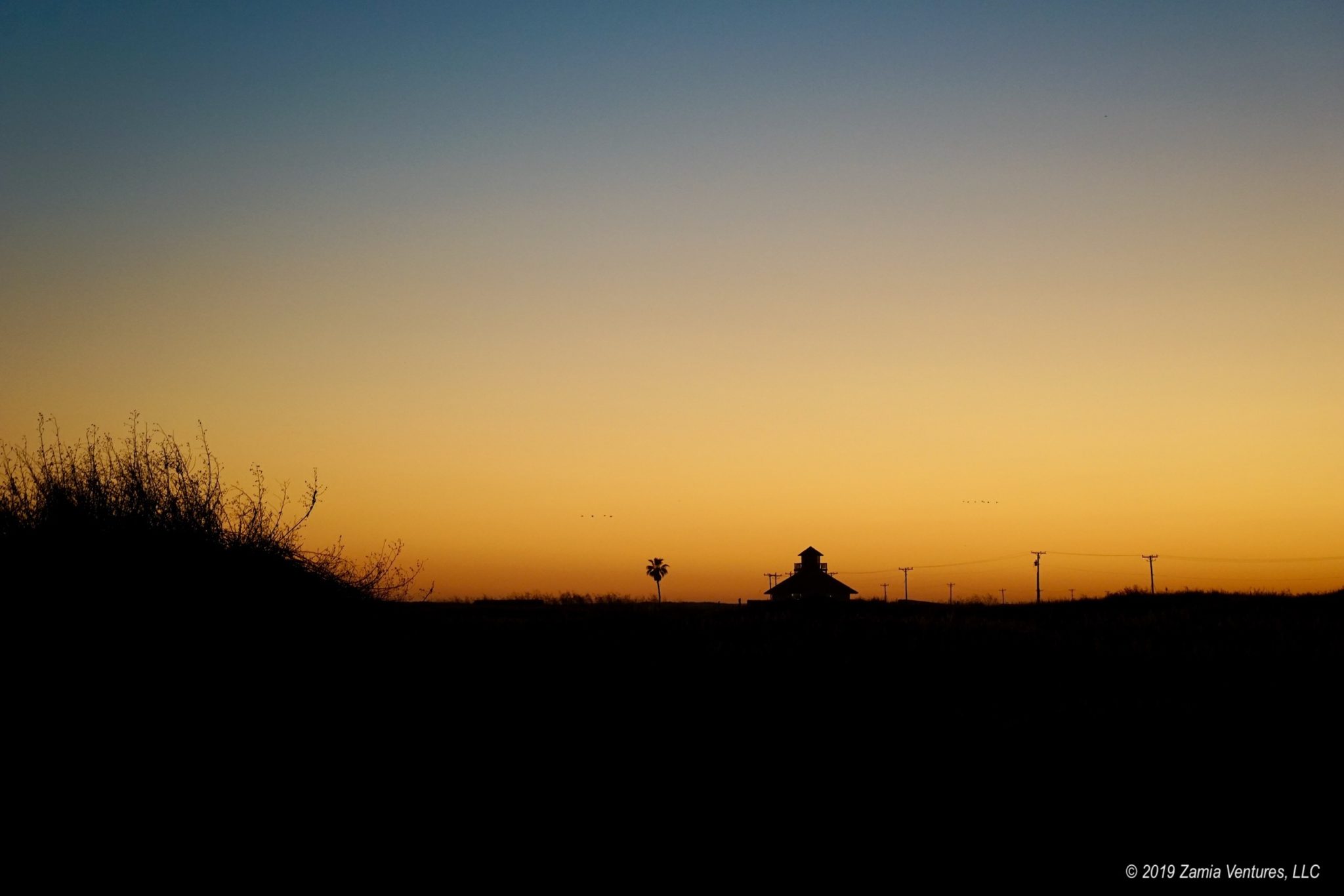
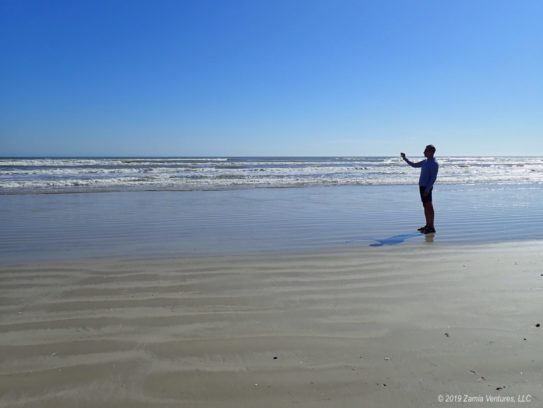
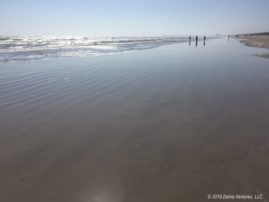
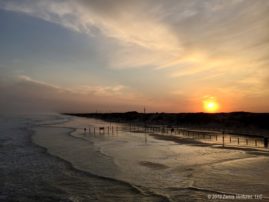
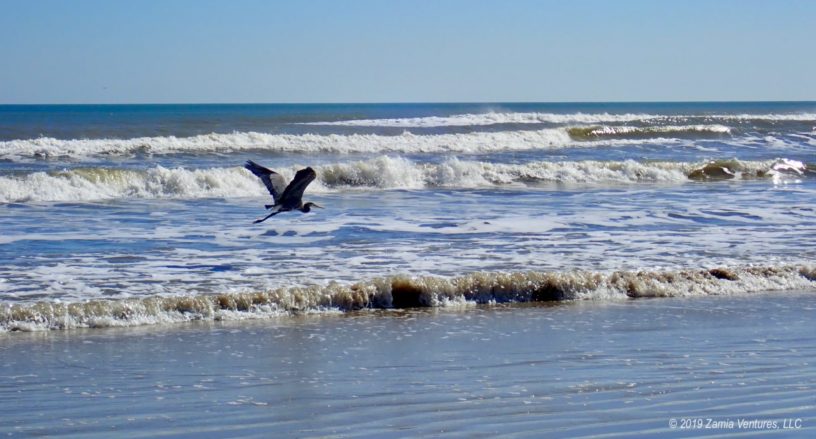
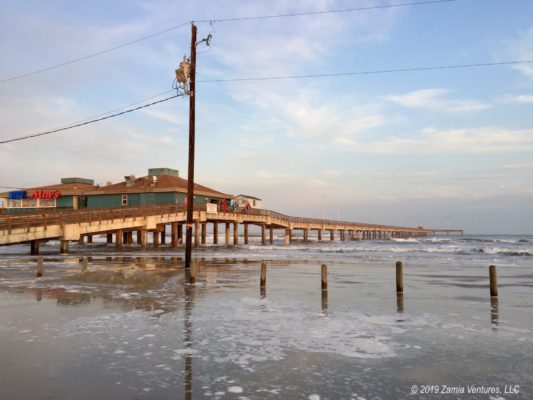
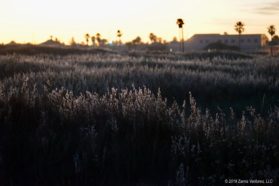
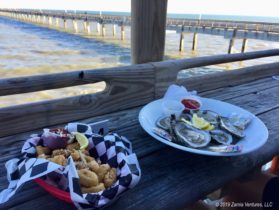
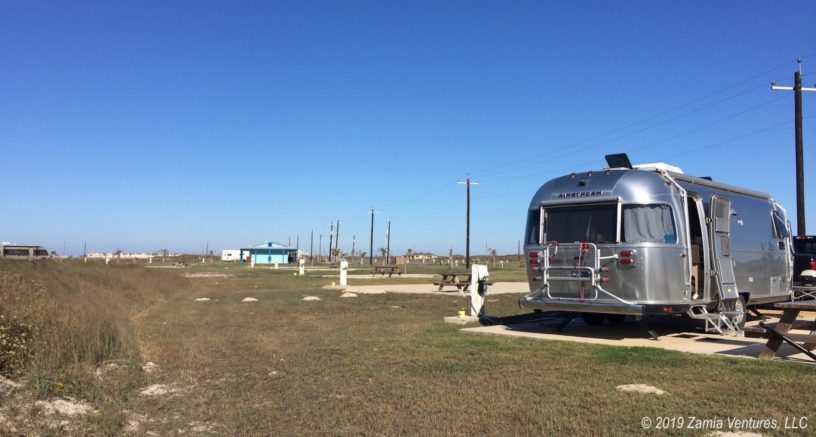
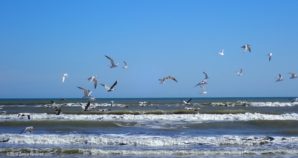
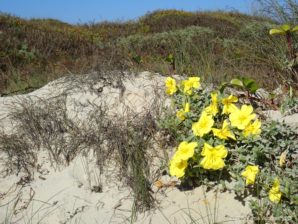

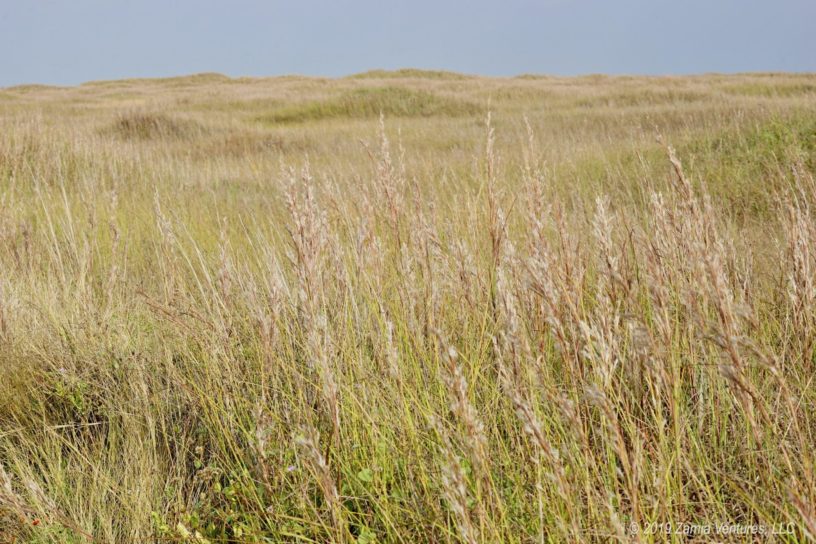
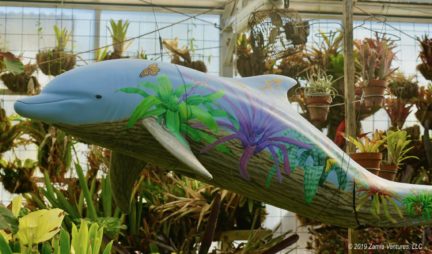


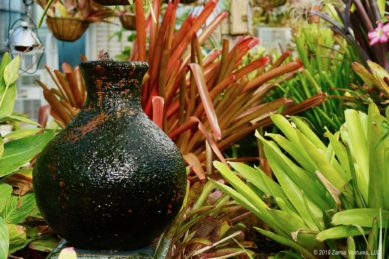
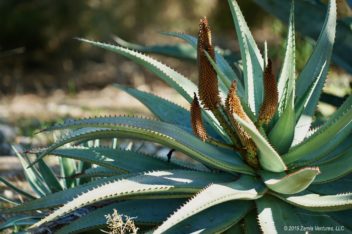


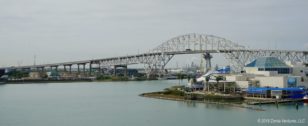
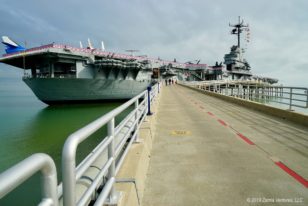
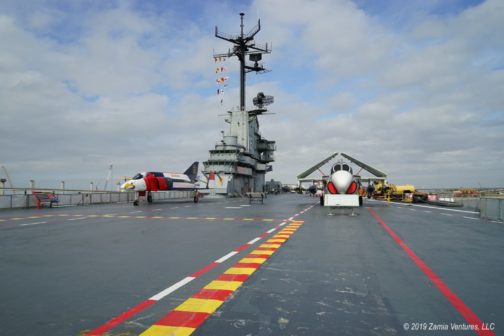
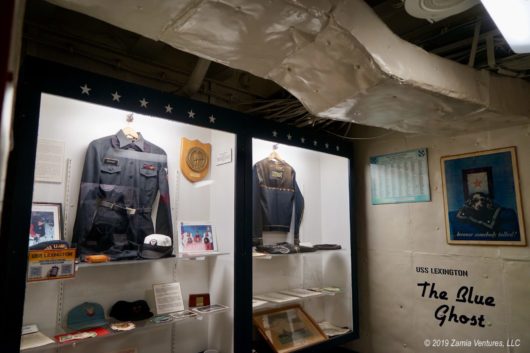
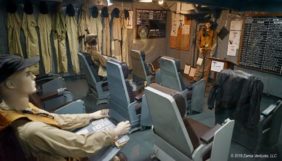
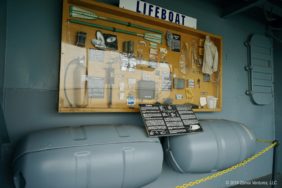
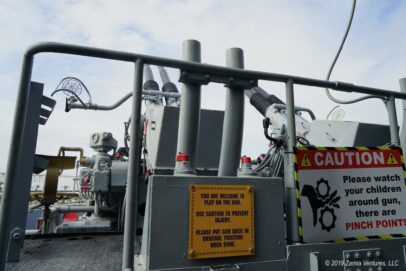
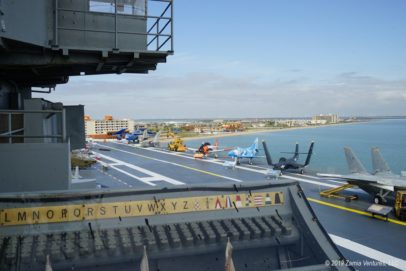
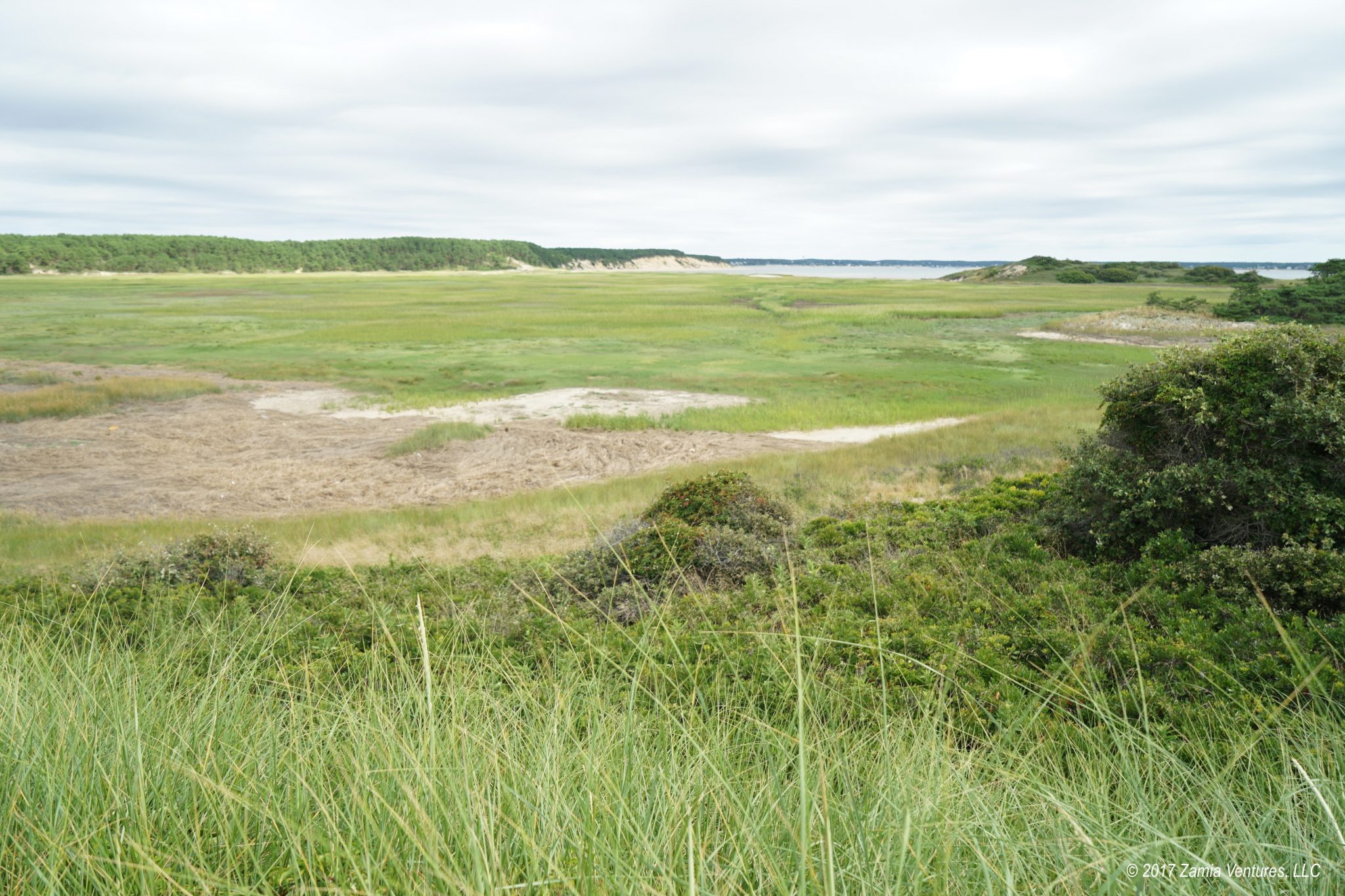
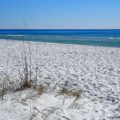
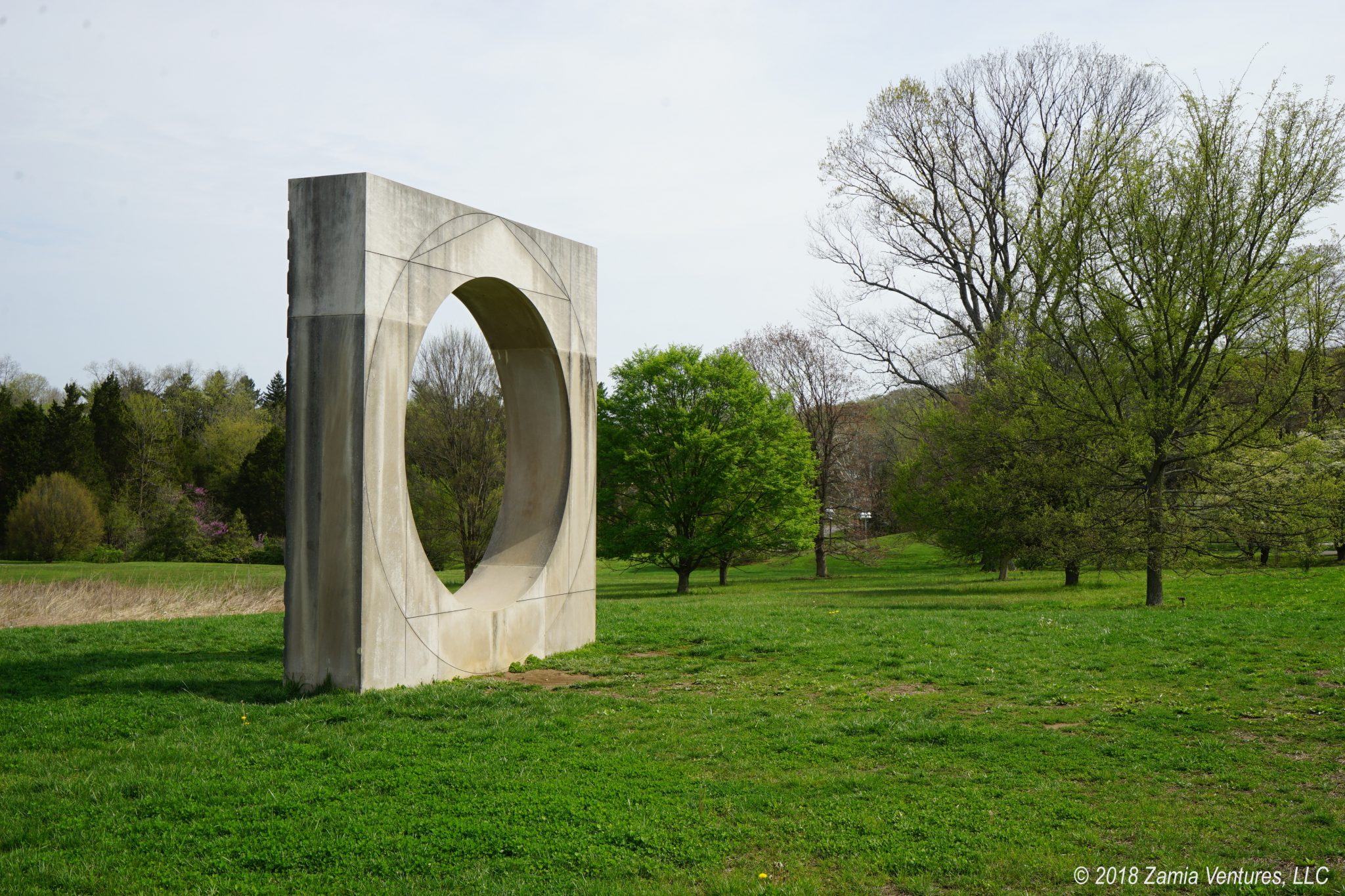
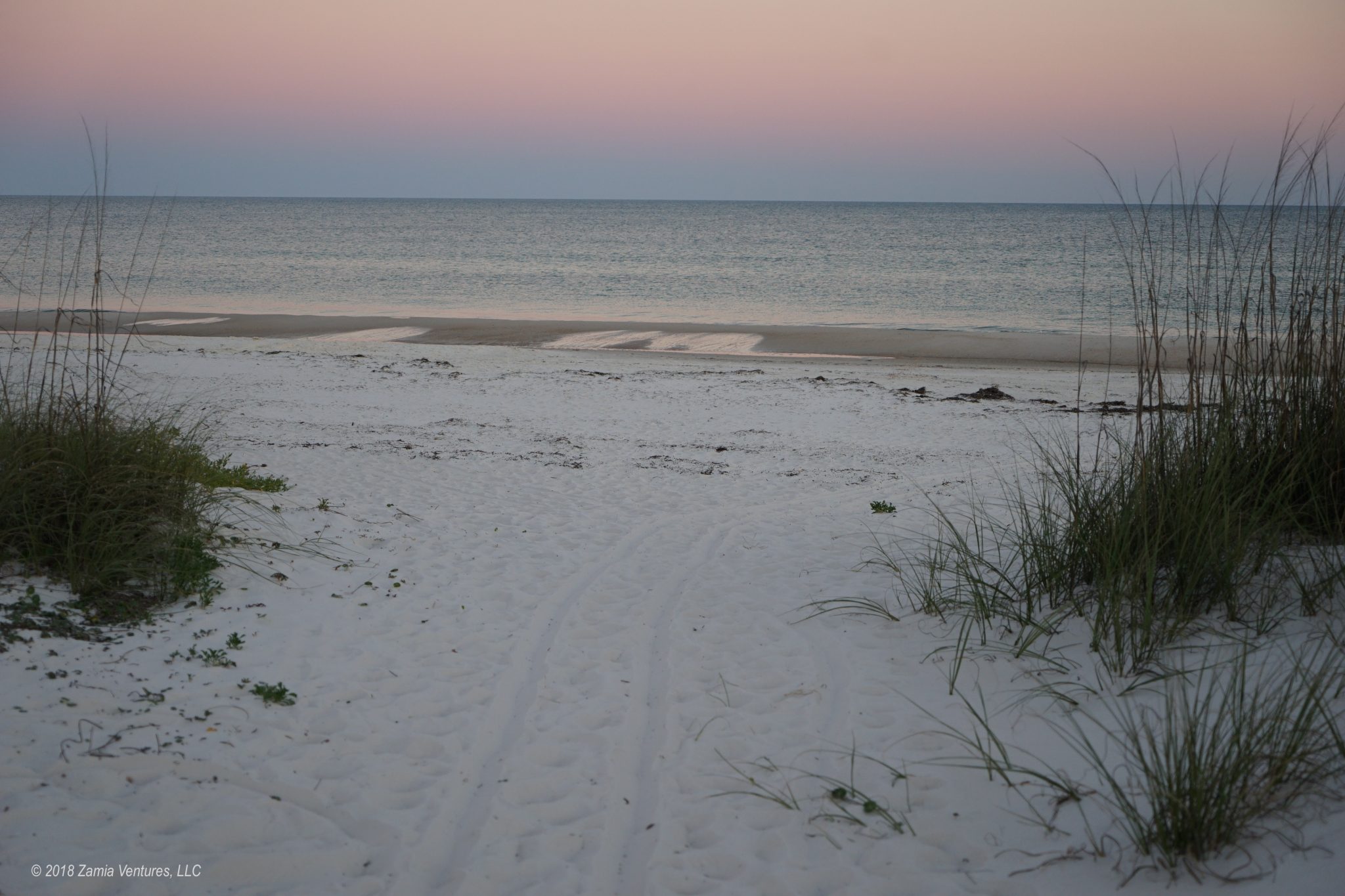
LOL… as we sit in our state park near the beach, I can assure you, the tracked in sand all over the floor quickly loses its appeal. Haha.. However, I totally get where you’re coming from. It’s crazy how much we miss other environments when we’ve been gone too long – the beach, the forests, the desert, the mountains… all hold their appeal.
It looks like you all found a GREAT beach to get your long awaited fix. Love, love, love those big wide beaches with no one on them. I agree with you on the driving thing too. While it might be fun for some folks, I just think it takes away from the overall feel and experience for everyone else. It’s just unnecessary. (Plus, I’d never do it because our car would totally get stuck or washed into the ocean and that would just be bad….)
The Lexington looks AWESOME. We love those things and while I totally hear you on the TMI issue, we’ve been to some other ship museums that didn’t provide nearly enough information. It’s nice when they can just meet in the middle. Ah well. I’d love to wander through that one. Those floating cities are just too cool!
Glad you guys are back in your happy place!
No! I will never be tired of the sand. At least that’s what I tell myself in the initial rose-colored glasses phase of being back at the beach. Why are you trying to force me to confront reality?? In any case, there is something particularly comfortable about being at the beach because we are both Floridians. I don’t think the desert will ever be a place we do more than visit, even though I love me some cactus.
The beach at Padre Island was great, and we were lucky to visit during some weather systems that resulted in waves. Normally the Gulf is fairly calm and boring, which also means quiet, and we love hearing surf. So we lucked out.
The biggest benefit of driving on the beach: beachfront parks don’t need to have parking lots. There’s just a sign saying “beach this way” and people drive onto the beach to whatever spot they want to occupy. We would normally be really leery about driving on sand, but this beach was very flat with hard-packed sand, and as far as we could tell the beach drivers never even aired down their tires. It was basically like driving on a dirt road…. at least until the tide comes in and swallows your vehicle.
The Lexington was definitely worth the admission fee, though after a while we had to be selective about what we chose to read and focus on. We learned a lot and being inside the ship made the experience of sailors so much more vivid and personal. Definitely a worthwhile stop.
We haven’t visited the Texas Gulf coast yet, but it surely looks like a great place is in store for us someday. I don’t know about the sand everywhere or being attacked by mosquitoes (the deadliest animal in the WORLD!!!!!!!!!!) but the dolphins, birds, sunsets, seafood, and deserted beaches could surely make up for that! I’m glad you got your fix and didn’t succumb to BWS 🙂
The mosquitoes are only in the marshy areas, so if you stay on the beach you are pretty safe. Which is handy, because that’s where we mostly wanted to be. One interesting thing about the Gulf Coast is the obvious presence of the oil and gas industry, in the form of offshore drilling platforms and also many refineries along the bay in Corpus Christi. We ignored those and focused on the birds, fish, dolphins, etc. which worked out fine for us. The empty beaches were a surprise because weather was pretty good during our visit, so I would have expected the locals to take advantage and visit the beach. Nope.
We’ve tried twice to get to Padre Island and have been skunked both times…first time because of weather and last time when there was a stupid government shutdown and we couldn’t stay at the national seashore where we planned to camp. I had just about convinced myself that I didn’t really care if we made it there or not, but seeing your photos, it’s back on the list!
I understand exactly what you mean about feeling at home with the Gulf beaches. I grew up in Florida, and although I’ve lived far away for many years, coming back always makes my soul happy. Even though I hate humidity and bugs, LOL. Actually, tracking sand into the RV also drives me mad. But I really do love the Gulf Coast! 😜
We’ve never been on an aircraft carrier. But reading about your experience, now I really want to visit the Lexington. It sounds fascinating, albeit overwhelming. I will take heed of your experience and remember to pace myself (I have a tendency to try to read everything, too. And I completely exhaust myself and run out of time).
We really enjoyed visiting in December, but the weather was totally unpredictable — in the course of one week we had days in the 50s and low 60s at both ends of our stay, with days in the 70s and even 80s in the middle. I can see how you could get totally shut out if you planned a relatively short visit. The campgrounds in the national seashore are pretty nice in terms of location (one is right by the beach and the other is on the lagoon near the boat ramp) but sites are packed together pretty close. We loved the newer section at Padre Balli CP and highly recommend it.
We were a little surprised by how emotional we felt about seeing such familiar surroundings, even though we had never visited this particular part of the country before. Your experience confirms what I suspected — that we will never really stop loving the beach.
We both really enjoyed visiting the Lex, despite feeling overwhelmed by all the information. Being on the ship itself was such a big part of the experience. One fun fact: though of course I realized military ships are not cruise liners designed for pleasure, I would have assumed that sailors on floating ships (not submarines) had regular views of the ocean. Nope! Other than people who manned guns or worked on the extremely dangerous flight deck, most sailors spent their time in windowless areas and might as well have been on submarines.